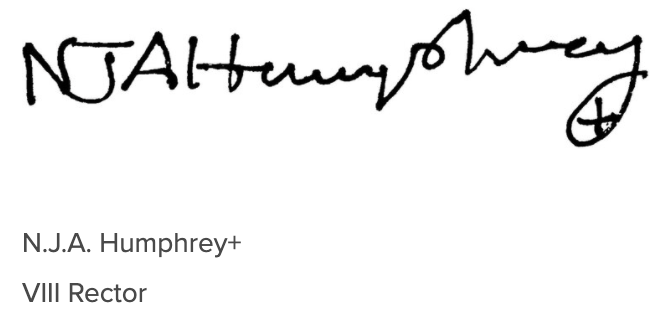Dear People, Neighbours, and Friends of St. Thomas’s,
Before I came to St. Thomas’s, I had never heard the term “Benedictine Day” to describe what everywhere else is usually called a “parish work day” or “clean-up day.” But the name immediately made sense to me, because I spent summers in college and seminary living with a community of Roman Catholic Benedictine monks in upstate New York. So I not only know a lot about what’s commonly referred to as “Benedictine Spirituality”; I’ve lived it.
The term “Benedictine Day” immediately calls to mind the official motto of the Benedictine order: Ora et Labora, Prayer and Work. St. Benedict, the founder of Western monasticism, wrote his Rule and in it laid out the pattern of life that a community of monks would follow. The monks were to pray seven times a day throughout the day, and in between praying, they would work, preferably with their hands. Farming was of course a big part of this, but so was scholarship. The monastery I lived in had a large library, but it was mainly a working sheep farm, run by the monks themselves. But whatever sort of labour the monks undertook, it was always to be integrated with their life of prayer. Prayer and work are not separate realms. They are two parts of a unified whole.
This came home to me most powerfully when I helped separate the lambs from the ewes at the end of the summer. The sheep were herded down the dirt road and into a chute where they would be vaccinated, checked for disease, shorn for wool, and the lambs would be weaned from their mothers. Henceforth the lambs would live in their own enclosure, until they, too, were ready to become mothers. As for the boy lambs, some were chosen to join the rams who would keep up the stock of lambs coming every year, or they would be fattened up for eventual slaughter. Along with the wool and yarn from the ewes, these sheep would sustain the health of the community both financially and physically. (I ate a lot of lamb over those summers).
But what did any of that have to do with prayer? Everything! Most of the services were centred on praying the psalms, and we were constantly hearing in the other scriptures as well about sheep. I could not watch the lambs being sorted without thinking of the parable of the sheep and the goats. I could not look at the lambs who were being shorn or those who would be fattened up without hearing in my head the words of Isaiah, “Like a sheep being led to the slaughter or a lamb that is silent before her shearers, he did not open his mouth.” (Isaiah 53:7) The scriptures came alive for me in a new, often visceral, way that first summer.
Did the same thing happen to those of us who gathered for the Benedictine Day at St. Thomas’s? Maybe, maybe not. But we did participate in the deeply spiritual practice of joining our prayer and our work together simply by caring for our place of worship. And, of course, the daily Mass was celebrated at ten o’clock before the day got underway, so we had a chance for some common prayer before our common work began.
I am so grateful for the ora et labora that we share as a community, day in, day out. Every minute we have to pray and work together, even if it involves a rollaway dumpster, is time well spent.
Yours in Christ’s service,
